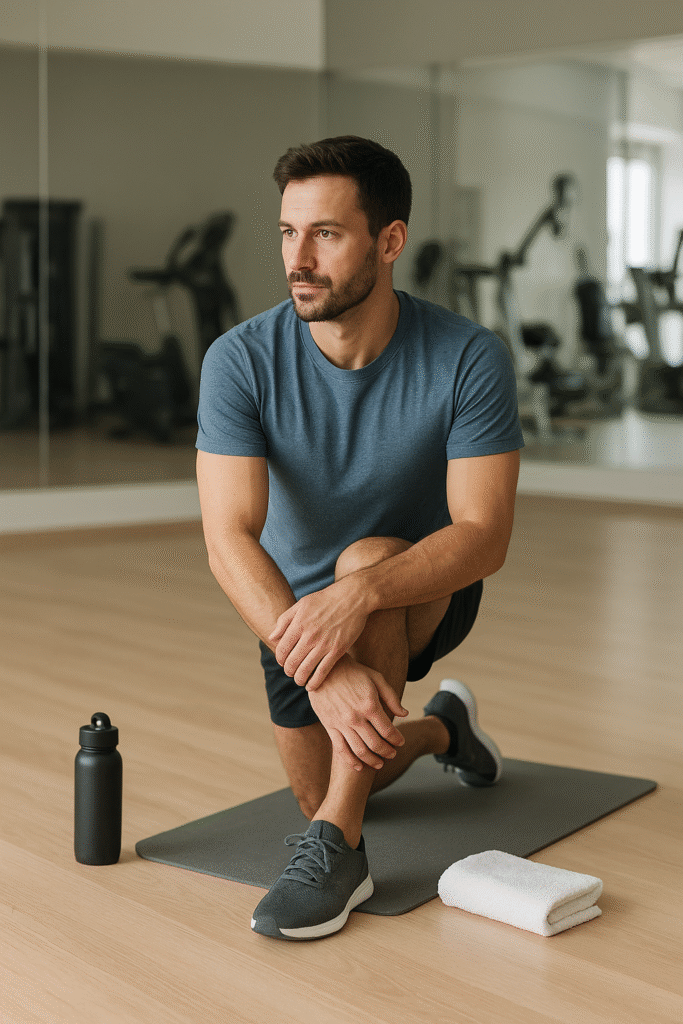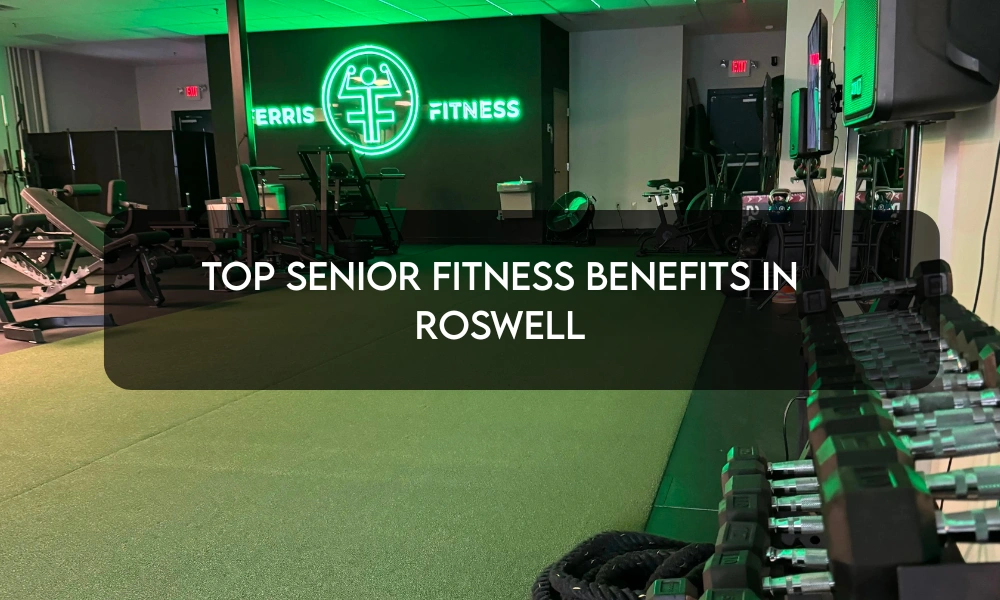Trying something new at the gym can be a little intimidating. I’ll be honest I wasn’t sure what to expect when I signed up for my first stretch therapy session at Ferris Fitness in Cumming. Stretch therapy sounded relaxing, but I wasn’t sure if it would actually help my stiff shoulders and tight hips. After the session, I can confidently say that it was worth every minute.
Here’s a quick overview of what you’ll learn from this article:
- What stretch therapy is and how it differs from regular stretching
- What my first session looked like step by step
- Benefits I noticed immediately and over time
- How to prepare for your first session
- Tips for making the most out of stretch therapy
What Stretch Therapy Is
Stretch therapy is a guided, hands-on session focused on improving your flexibility, mobility, and overall movement quality. Unlike stretching on your own, a trained professional at Ferris Fitness helps you reach areas you might miss, making sure your muscles and joints move safely.
It’s especially beneficial if you spend a lot of time sitting, have tight hips, or deal with stiffness from weightlifting or other workouts. Think of it as giving your body the reset it’s been asking for.
My First Session Experience
Walking into the studio, I immediately noticed the calm atmosphere. It’s quiet, clean, and comfortable with no clanging weights or blaring music. My stretch therapist greeted me warmly, asked about my goals, and discussed areas of tension. I explained my stiff shoulders, lower back tightness, and a minor hip discomfort that had been bothering me for months.
Step 1: Assessment and Warm-Up
We started with a brief assessment to understand my mobility limitations. My therapist asked me to perform a few simple movements, like shoulder rolls, hip circles, and bending exercises. This helped identify which areas needed the most attention.
Next came a gentle warm-up. This wasn’t intense cardio just some light dynamic movements to loosen my muscles and prepare them for deeper stretches.
Step 2: Guided Stretching
The main part of the session involved guided stretches. The therapist worked on my shoulders, back, hips, and legs. Some stretches were assisted, where they helped me go deeper than I could on my own. Others focused on slow, controlled movements to release tension gradually.
At first, some stretches felt uncomfortable. But the therapist constantly checked in to ensure I wasn’t straining, adjusting angles and pressure as needed. It reminded me that a little discomfort is normal when your muscles are finally getting the attention they need but pain is not.
Step 3: Focused Release Techniques
We also used targeted release techniques for stubborn tight spots. These included gentle muscle presses and guided movements that improved my range of motion. After a few minutes, I could feel tension melting away in areas I didn’t even realize were tight.
Step 4: Recovery and Feedback
The session ended with a short cool-down and some light stretches I could do at home. My therapist gave me personalized tips for maintaining mobility between sessions and suggested stretches to integrate into my routine.
Benefits I Noticed
Even after my first session, I noticed some immediate benefits:
- Improved flexibility: My shoulders and hips felt looser.
- Reduced tension: My lower back stiffness decreased noticeably.
- Better posture: Sitting felt easier, and I caught myself standing taller.
- Relaxation: Mentally, I felt lighter and more focused.
Over time, consistent stretch therapy can help with:
- Injury prevention
- Faster recovery from workouts
- Enhanced athletic performance
- Greater overall mobility and comfort in daily life
How to Prepare for Your First Session

To get the most out of your first stretch therapy session, I recommend:
- Wear comfortable clothing – something that allows full movement.
- Hydrate well – it helps muscles respond better to stretches.
- Communicate your goals and concerns – your therapist can focus on areas that matter most.
- Arrive with an open mind – some stretches may feel new or slightly challenging.
- Take notes – your therapist may suggest stretches or exercises to continue at home.
Tips for Maximizing Results
- Consistency matters: One session feels good, but regular sessions deliver noticeable long-term benefits.
- Combine with other fitness routines: Stretch therapy complements strength training, yoga, and cardio.
- Track progress: Notice changes in flexibility and mobility over weeks.
- Listen to your body: Stretching should feel relieving, not painful.
- Ask questions: Your therapist is there to guide you, not just stretch you.
Helpful Ferris Fitness Articles to Boost Your Mobility and Strength
If you want to take your fitness further and complement your stretch therapy sessions, these articles from Ferris Fitness are a great place to start:
- Stretch Daily: Top Benefits of Stretching for Health
- Soothing Strategies for Knee Pain Relief
- Gain Strength Fast: How to Build Muscle Effectively
- Beginner Body Weight Workout Guide: Get Fit at Home
These resources can help you combine stretch therapy with strength training, improve flexibility, and support overall mobility for a healthier, stronger body.
FAQs About Stretch Therapy
1. How long does a typical session last?
Most sessions last 45–60 minutes, which is enough to address multiple areas of tension.
2. Is stretch therapy painful?
You may feel mild discomfort in tight muscles, but it should never be painful. Communicate with your therapist throughout.
3. How often should I do stretch therapy?
For best results, 1–2 sessions per week are recommended. It complements regular workouts and daily mobility routines.
4. Can stretch therapy help with injuries?
Yes, it can improve flexibility and reduce strain, which may aid in recovery and prevent further injury.
5. Do I need prior experience or flexibility?
No. Stretch therapy is suitable for all levels, from beginners to advanced athletes. Your therapist adjusts techniques to match your needs.
Final Thoughts
If you’ve been dealing with tightness, soreness, or just feeling “off,” I highly recommend trying a stretch therapy session at Ferris Fitness in Duluth. It’s one of those things you don’t realize you need until you experience it.
I came in curious, and I left feeling stronger, lighter, and more mobile than I had in months. And the best part? It’s right here in the community, serving Duluth, Buford, and Cumming.
Sometimes the smartest move you can make for your health isn’t lifting heavier or running farther, it’s giving your body the recovery it deserves. Stretch therapy is the perfect place to start.

Top Benefits of Senior Personal Training in Roswell
Getting older doesn’t mean slowing down, it means training smarter. And if you’re a Roswell resident looking to stay strong, active, and independent, senior personal

Private Gym or Big Box? Georgia’s Fitness Showdown
If you live in Georgia and you’re ready to get serious about fitness, you’ve likely asked yourself this question: Should I train at a private

6 Week Beginner Fitness Plan in Buford, GA – Build Your Strength the Right Way
Starting a new fitness routine can feel confusing especially if you’re not sure what works or where to begin. At Ferris Fitness, we make that
